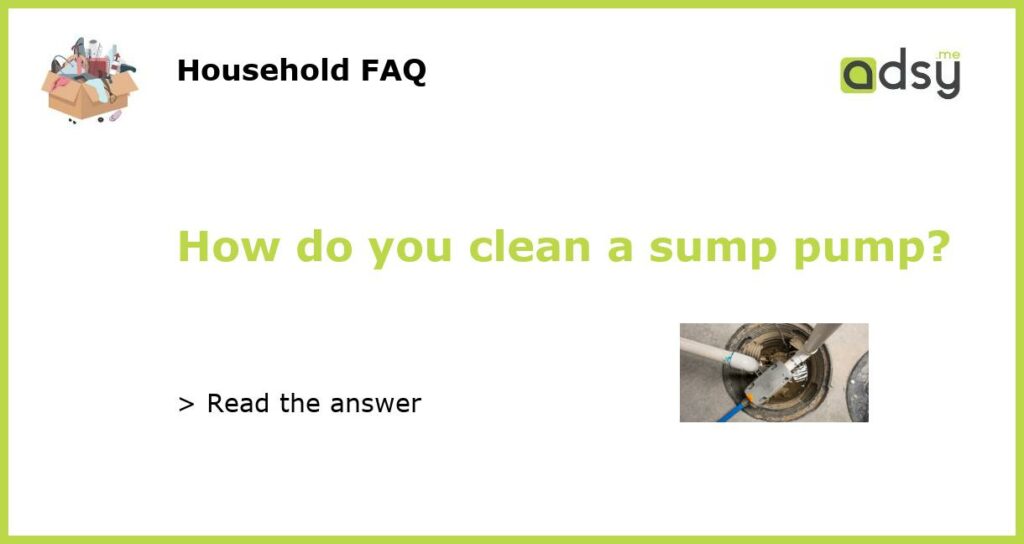Understanding the Basics of a Sump Pump
A sump pump is a device that is commonly used in basements or crawl spaces to remove excess water. It is typically installed in a sump pit, which is a hole dug in the lowest part of the area to collect water. When the water level in the pit reaches a certain level, the pump is activated and it pumps the water out to prevent flooding.
Preparation and Safety Measures
Before you start cleaning your sump pump, it is important to take some necessary precautions. First, ensure that the power supply to the pump is disconnected to avoid any accidents. You can do this by unplugging the pump from the electrical outlet or turning off the circuit breaker that supplies power to the sump pump. Additionally, you should wear protective gloves and goggles to protect yourself from any debris or dirt that may come out of the pump during the cleaning process.
Cleaning the Sump Pump
Here are the steps to clean a sump pump:
Step 1: Remove the pump – Begin by disconnecting the pump from the discharge pipe, which is the pipe that carries the water out of the sump pit. This can usually be done by loosening a clamp or removing a threaded connector. Once the pump is disconnected, lift it out of the sump pit.
Step 2: Clean the pump and impeller – Using a damp cloth or sponge, wipe down the exterior of the pump to remove any dirt or debris. Pay special attention to the grates or screens on the pump, as these can become clogged with debris. Next, inspect the impeller, which is the rotating part of the pump that moves the water. If you notice any debris or buildup, use a soft brush or toothbrush to gently clean it.
Step 3: Clean the sump pit – After cleaning the pump, it is important to clean the sump pit as well. Use a wet/dry vacuum or a small bucket to remove any standing water that may be present in the pit. Then, use a brush or scrub pad to clean the sides and bottom of the pit, removing any dirt or sediment that may have accumulated. Rinse the pit with water to ensure it is clean and free of debris.
Step 4: Reassemble and test the pump – Once the pump and sump pit are clean, reassemble the pump and reconnect it to the discharge pipe. Make sure all connections are secure and tight. Finally, plug the pump back in or turn the circuit breaker back on to restore power to the pump. Test the pump by pouring a small amount of water into the pit and verifying that the pump activates and removes the water effectively.
Regular Maintenance to Prevent Clogs
Regular maintenance is key to keeping your sump pump working properly and to prevent clogs. Here are some maintenance tips:
1. Inspect and clean the pump and pit at least once a year. This will help prevent clogs and ensure the pump is in good working condition.
2. Install a sump pump cover or lid to prevent debris from falling into the pit and clogging the pump or impeller.
3. Check the discharge pipe regularly to ensure it is clear of any obstructions. This is especially important during the winter months when freezing temperatures can cause ice to build up in the pipe.
4. Test the pump regularly by pouring water into the pit and verifying that it activates and removes the water effectively.
Conclusion
Cleaning a sump pump is an important maintenance task that should be done regularly to ensure its proper functioning and prevent clogs. By following the steps outlined above and implementing regular maintenance practices, you can keep your sump pump in good working condition and avoid potential flooding issues in your basement or crawl space.

